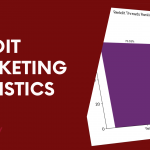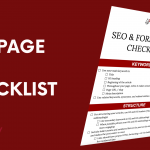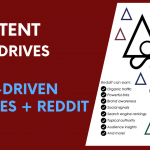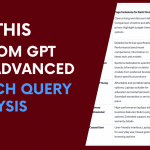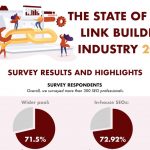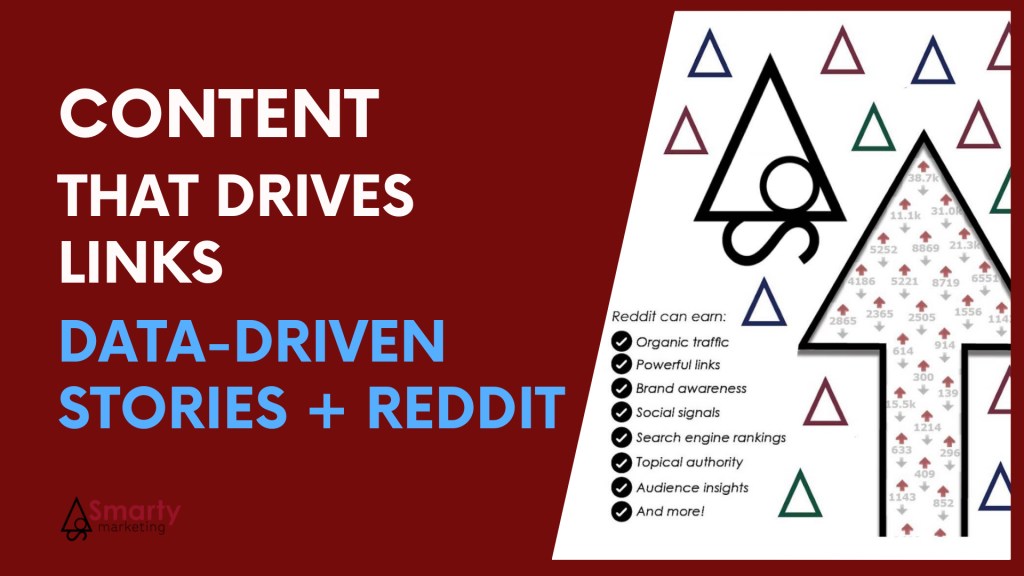
Getting linked is fundamental to online visibility. Search engines (and AI platforms) discover your site by crawling links from other pages. Fresh links encourage crawlers to come more frequently.
Solid editorial links from trusted sources act as both direct and indirect signals helping your whole site rank higher:
- They pass equity helping Google perceive your content as more valuable and useful;
- Links connect you to trusted entities (making your page more trustworthy);
- Links build brand authority establishing your site as a topical authority.
However, getting people to link to your site is becoming more and more challenging for many reasons, including outreach email fatigue and content overload making any page “just another article”. It is very difficult these days to create and position your content the way it attracts links.
As a result, online brands are dealing with a clear dilemma here: There’s no ranking unless your site is linked to, and it is next to impossible to get links that move the needle.
Well, we have an answer and we are happy to share our process with you. Here’s how we create linkable assets that attract editorial backlinks long-term.
In this article:
Target the “linking” audience
Linkable assets (also referred to as link magnets) are meant to attract links, not necessarily your actual customers.
In other words, linkable assets target people who influence your customers (through their sites or social media channels).
Changing this mindset will help you research your topics from a different angle. You need to start researching who your customers are reading and following and create content targeting these influencers.
- Which topics are they writing about?
- Which stories are they sharing on social media?
- What are they discussing on forums and Reddit?
Speaking of Reddit (and I’ll talk about it even more below), it is also a great way to brainstorm ideas that are likely to trigger active discussions and a lot of interactions.
Brainstorm unique ideas
I know what you are thinking: It is next to impossible to create something new these days. Everything has already been written. Well, here’s how we do that:
Find interesting data (and tell a unique story based on that)
Use publicly available data and find a unique story based on that.
For example, instead of simply visualizing how much more expensive houses have become over the years, visualize how much smaller they have become for the same amount of money.
Not only is this a new way of looking at the old (and well-known) statistics, it is also much more likely to trigger emotion which is a driving force behind going viral.
Collect unique data
Use unique data you were able to collect from your customers, peers, or target audience. We do it in any of these three ways:
- Survey your existing customer base works great (this can also re-engage them and remind them of your brand which may lead to more sales).
- If you don’t have a big enough customer base, take the time to personally reach out to your industry peers (LinkedIn connections, bloggers, social media friends) and ask them to complete your survey (this may help you establish connections with niche influencers and drive some leads or partnerships).
- Create your audiences on Linkedin or Facebook and collect data through social media ads.
Visualize your data
We use this method in combination with either of the above methods.
Images remain the most efficient way to put your content in front of more eyes because there are so many organic search distribution channels for images, mainly:
- Organic image packs (When Google shows related images within organic search results for certain queries)
- Google image results (I always check image results when creating content in search for some relevant visuals or data to reference. Many reporters and bloggers do the same)
- Pinterest which ranks very well in Google as well.
Visuals make data easier to understand and the data-driven stories more convincing. Like with that housing cost data example, if you just tell people that houses got more expensive, that won’t do much. Everyone knows that. But if you visualize how much smaller houses has gotten (without any changes to the average household income), that’s when people become emotional, so they start commenting, sharing and linking to your asset.
Validate your linkable asset idea using SEO data
Creating something awesome will likely drive you some links if you distribute your content well (see below), but don’t expect every content piece of yours to go viral. 5-10 links after a publication may be considered a solid win.
What you ultimately need to achieve here is to rank this page in Google. This way your asset will be discoverable through organic search, that’s how it will keep driving editorial links long-term.
Journalists and bloggers use Google search all the time to find data, studies and stories to reference in their articles (or to balance them better with unique angles).
So once you have your unique story idea, spend some time researching keywords to understand how your link amplifiers will find your linkable asset when searching Google.
Your goal is to rank your asset in the top 5 of organic search results. As I mentioned before, our infographics are also highly discoverable through:
- Image packs
- Image search
So look out for these sections when determining your keywords.
Images have more discovery channels than PDFs, text or even videos. So creating an image version of your research is a key step to success.
As a quick example, here’s the difference between some of our infographics’ performance after a month and then after a year of publication. Even in the least exciting niches (like industrial software), our linkable asset was able to organically generate 10 times more links than immediately after the initial promotion period.
And those are all purely organic editorial links that move the needle:
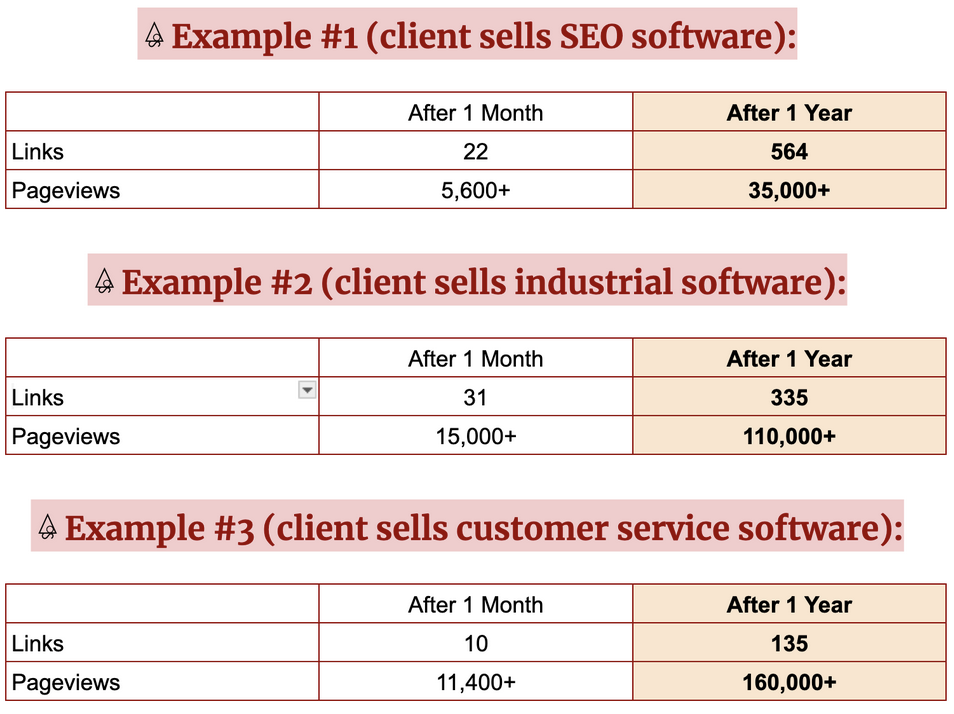
Take a look at the second column: These are the links no one asked for. These backlinks were coming on their own thanks to the strategic planning and execution.
Distribute your content with “link generation” in mind
Once you have your content written and visualized well, think about how you can help it get noticed by people who can send those links to it. Social media shares and clicks are all great results but links are what going to drive long-term value (and rankings).
The two most effective channels we are using are:
Reddit is the home page for people who are constantly using it for fresh content ideas.
Using Reddit to distribute your content is a form of art: You cannot quite use the same methods from subreddit to subreddit unless you want to be banned or moderated.
You need to truly become part of those communities, provide value and make sure you are following all the specific rules of each subreddit.
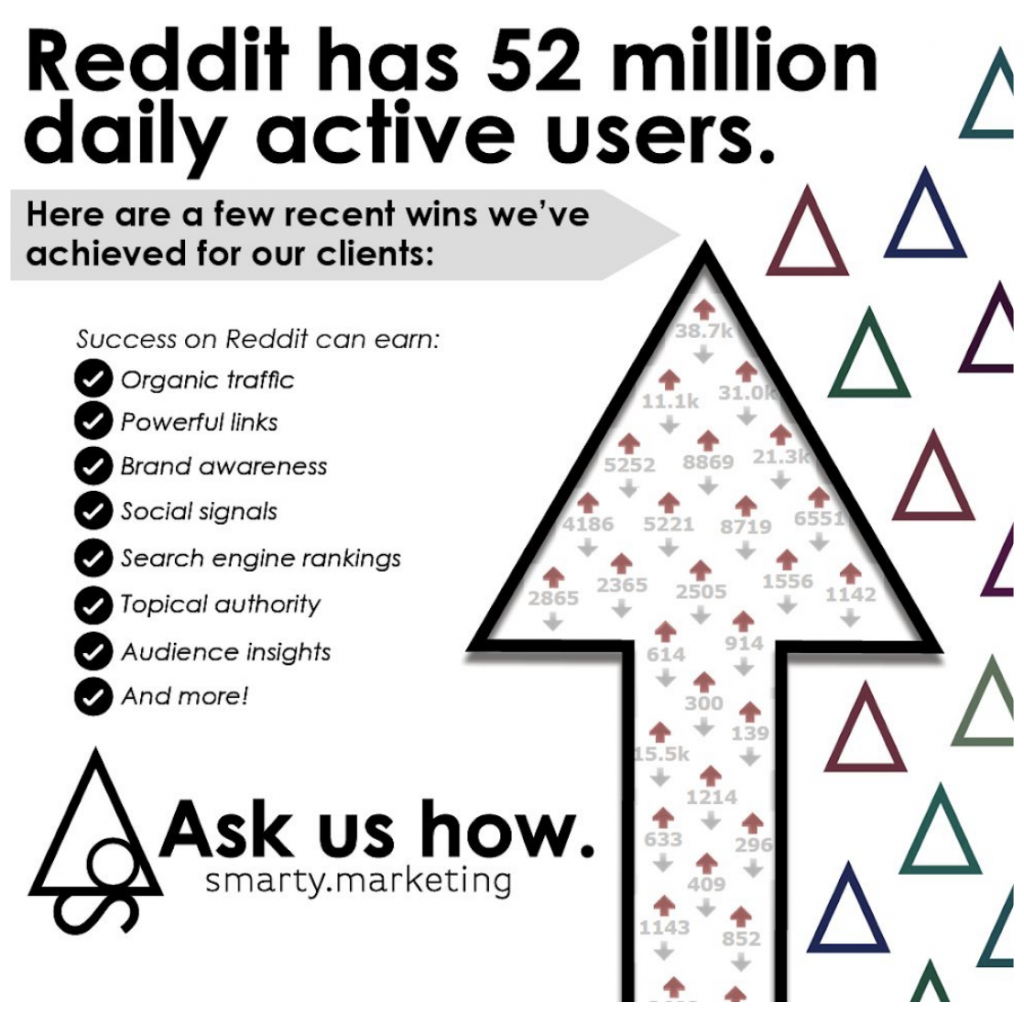
However being on Reddit is priceless, so all that work is very rewarding.
- Reddit helps your content get noticed organically, without you manually reaching out to particular publishers or writers (we do that too)
- Reddit threads work incredibly well in Google, so that creates an additional discovery channel for journalists to find your content months after publication.
- In some cases (per our stats, that’s about ¼ of our assets) Reddit helps your asset go viral, and that’s when your site will receive thousands of links and mentions.
More importantly, a successful Reddit placement sends brand-building signals that contribute to many more ranking signals. As an example, we did a viral marketing campaign for a very new startup that barely had any brand-driven searches. We created a data-driven visual asset, pushed it on Reddit, and reached out to journalists. This acquired links from news publications to the site. Within a week after the first couple of outreach-driven links, Google promptly associated the site’s name with the biggest player in the industry:
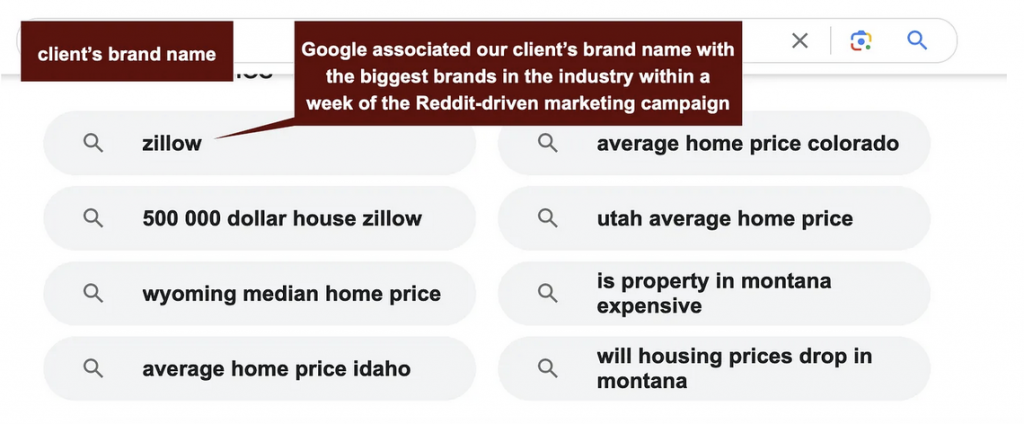
Our approach to Reddit marketing is:
- Following the specific subreddit’s rules
- No scaling
- Becoming part of a subreddit and adding value
- Positioning assets the way they provoke discussions
- Learning ALL THE TIME with every asset we promote.
Direct email outreach
Most reporters keep their DMs open and email addresses public for this exact reason: They want people to send them content ideas. And our visual stories are exactly what they are looking for.
Both of these channels require a lot of testing and fine-tuning.
- You need to get to know how relevant subreddits work to make sure you are following all the rules. Listen a lot to get a feel of what may be well received and what may be frowned upon.
- You need to establish yourself in those subreddits and actually share meaningful contributions to become part of the community. No one likes new accounts that just share links.
- You need to identify the most effective ways of finding journalists and how to best approach them.
We have been creating and distributing linkable visual assets for about 10 years now, so we know how much time and work it takes to establish processes that are effective and safe. You cannot scale Reddit promotion unless you are willing to fail. It takes a lot of creative thinking and unique approaches for each project we create.
Consistency is key
Now, to the most important part: You need to publish and distribute linkable content on a regular basis. You cannot create one asset and expect your site to rank for everything you’ve ever dreamed of.
It’s all about consistency, just like with any other marketing tactic you are implementing. Google needs to see that your site is consistently coming up with something good enough for various people to link to it, discuss it, and share it.
That’s the gradual accumulation of all the positive signals that make Google see you and your site as a topical authority worth surfacing for their users.
